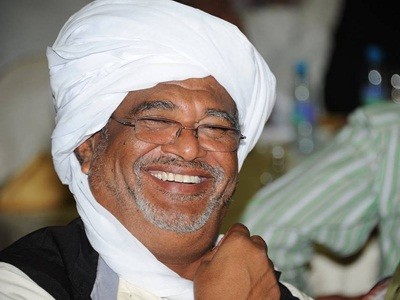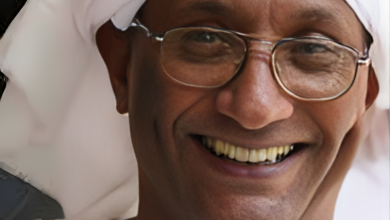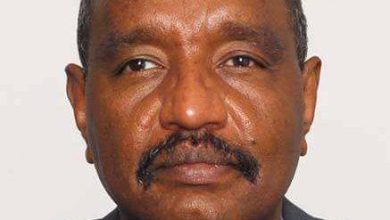Northern Al-Jazirah in the Sudan War (April 15, 2023 – ???): From Al-La’ota to New York (What Entered Us Will Never Leave Again… For I Am Now Someone Else)

Abdel Latif Al-Bouni
(1)
To the soul of my lifelong companion, from childhood to old age, my classmate from elementary school to university lecture halls, and my eternal soulmate, Dr. Siddiq Mohammed Ahmed Mudawi (journalistic name: Siddiq Mudawi). I always said, “God loves you,” because you loved everyone, including those who disagreed with you on everything. And there is no greater proof of God’s love for you than that you departed this world before April 15, 2023. After that date, a different chapter of our lives unfolded, and it is only fitting that its first lines be dedicated to you and a plea through you—something ordained by God, as we shall see at the end of this article.
(2)
The ongoing war in Sudan is not a traditional conflict between two armed forces. Rather, in its larger dimension, it is an assault by an armed force on unarmed civilians who do not even know how to wield a stick. Yet, the relationship between war and aggression is dialectically intertwined—each element affects the other in a way that makes them inseparable.
For instance, if we examine the issue of “looting” (taghneem), which contributed to the mass mobilization of the Rapid Support Forces (RSF), we will see that it played a major role in weakening them, especially as it became associated with tribal affiliation. As a result, the victims of this aggression were involuntarily drawn into the war.
Indeed, all of Sudan, from its capital to its remote villages, has suffered immensely from this war, paying a steep price in lives and property. However, the suffering has varied in intensity: regions experiencing direct warfare and brutal aggression have endured differently from those that only saw protests; areas where life came to a complete halt contrast with those where some semblance of normalcy remained; devastated villages differ from those that never heard the sound of gunfire; and those who fled, lost everything, and were displaced are not in the same situation as those who were indirectly affected. It goes without saying that this disparity was not a choice but was imposed by the aggressor.
The northern region of Al-Jazirah, administratively part of the Al-Kamalain locality, has borne the full horrors of war from day one, or even earlier—on April 14, 2023—when a mutiny took place in the 1st Infantry Brigade in Al-Baqir. The war in this region intensified exponentially after the fall of Wad Madani on December 18, 2023. The people of this area have endured killings, massacres, looting, displacement, and destruction—even their crops and livestock have been devastated.
(3)
The people of northern Al-Jazirah did not surrender to the war as some might assume. Instead, they resisted, maneuvered, strategized, and endured—even engaging in dark humor. The most significant response was passive resistance (Primary Resistance), but its impact was limited. Swords do not challenge guns—except in poetry, as Sudanese singer Mohammed Wardi once sang: “How can a sword challenge a gun?” May God have mercy on Wardi—he was among Sudan’s fortunate ones, for he sang beautifully for all of Sudan and passed away before April 15, 2023.
(4)
Even within northern Al-Jazirah, the war’s impact varied greatly. Villages along the Blue Nile (“Baher villages”) and those along the Khartoum-Madani highway (“Zalat villages”) had similar but not identical experiences—except for Al-Takina, which had a unique story of its own that must be told one day. The “Dahra villages”, located deep within the Al-Jazirah agricultural project, also had diverse experiences. The villages of Al-Sereehah and Azraq became known nationwide, and their fate was mirrored by Al-La’outa and Wad Lameed, each with its own tragic story.
For example, Wad Lameed was entirely evacuated for “shafshafa” (forced looting), after which floodwaters were unleashed upon it, leaving buildings either collapsed or on the verge of collapse—with only catfish left as the surviving creatures. Meanwhile, other villages, such as Kab Al-Jidad, fell prey to the third wave of RSF occupation.
The population of northern Al-Jazirah is nearly two million, spread across hundreds of villages that had been safe, thriving, and stable for about 140 years. Suddenly and without warning, all that security, development, and tranquility vanished like dust in the wind.
Even the “Kananbi” villages, which are communities of agricultural workers (often marginalized), suffered disproportionately in this war. In the early months, they faced brutal ethnic aggression by RSF forces, and later, some of their young men—like those from the older villages—joined the RSF. However, at the height of the war, the Kananbi villagers often sacrificed their own food to help others, proving their deep integration into Al-Jazirah’s social fabric.
(5)
A prime example of war’s devastation is Al-La’outa, a large village with a population of about 25,000 before the war, which swelled to 30,000 due to displacement. This productive village resisted the aggression with all forms of primary resistance, losing five martyrs—four outside the village and one within it.
A few residents fled abroad after the fall of Wad Madani, while most remained cautiously in place. But on November 14, 2024, Al-La’outa was invaded by a full RSF combat force—dozens of armed vehicles and hundreds of motorbikes carrying about 3,000 fighters. The entire population was displaced, 25 residents were executed on the spot, and even more died while fleeing. Everything was looted—cars, electronics, crops, and livestock—with total losses estimated in the tens of millions of dollars.
For 18 days, the village was completely overrun. Residents scattered into surrounding fields, sought refuge in nearby villages, or were forced to bribe RSF soldiers just to escape. In a cruel irony, they were made to pay for transport in vehicles stolen from them.
Today, two-thirds of Al-La’outa’s people have fled to other Sudanese states, while those who remain struggle to rebuild. The war ended only when the Sudanese Armed Forces reclaimed the area, and at the time of writing, most of Al-Jazirah has been liberated, with government forces now on the outskirts of southern Khartoum.
(6-10)
The tragedy of Sudan must be documented by Sudanese themselves, not left to foreign historians or those with hidden agendas. The war’s impact has been shaped by local, regional, and international factors, and it must be analyzed thoroughly.
I personally had stopped writing since March 2021—out of disillusionment with politics—and after the war began, I lost the will entirely. Today, I write on my phone because my home was ransacked, and I no longer own a desk or even a laptop.
The Sudanese online discourse is completely disconnected from the harsh realities on the ground, and this gap must be bridged. If we leave the digital narrative to empty propaganda, it will only bring greater disaster upon Sudan.
Finally, if you meet an old friend after this catastrophe, embrace them and weep together—perhaps that will be the first step toward national healing.



